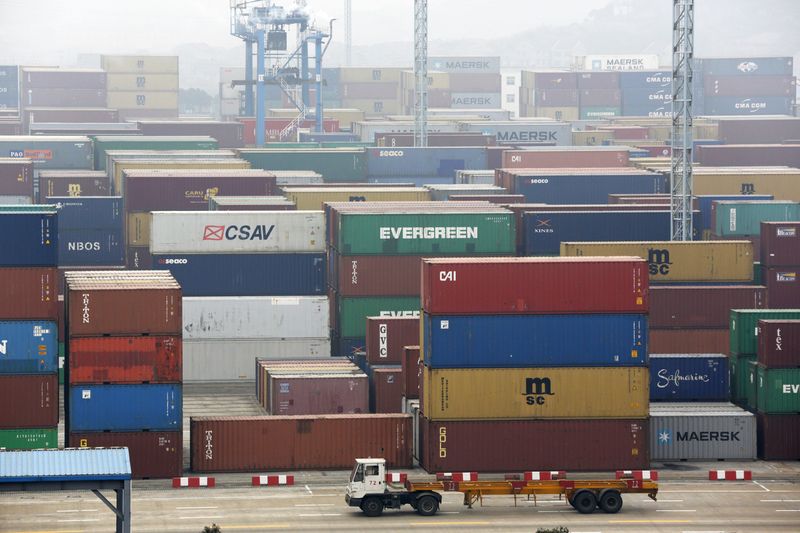By David Ljunggren
OTTAWA, Sept 6 (Reuters) - Canada's trade deficit in July shrank to C$3.04 billion, thanks largely to a strong Canadian dollar that cut the value of imports and also helped depress exports, Statistic Canada said on Wednesday.
Analysts in a Reuters poll had predicted a shortfall of C$3.1 billion. StatsCan revised June's deficit to C$3.76 billion in June from an initial C$3.60 billion.
In volume terms, imports fell by 2.3 percent while exports dropped by 1.1 percent.
The data came too late to influence the Bank of Canada, which was due to make an interest rate announcement at 10 am ET (1400 GMT) on Wednesday. Analysts are split over whether it will hike rates for the second time this year as the economy strengthens.
The central bank has long fretted over what it sees as the relative underperformance of Canada's non-energy export sector.
"Prices did play a significant role but weaker volumes also contributed and point to a slowdown in growth in the third quarter," said Royce Mendes of CIBC Economics.
The value of imports fell by 6.0 percent from June, with lower prices accounting for most of the decline. The Canadian dollar gained 3.6 U.S. cents against the greenback in July.
The robust domestic currency also depressed the value of exports, which dropped by 4.9 percent after falling by 5.0 percent in June. Many major exporters price their goods in U.S. dollars, which means they receive fewer Canadian dollars as the currency strengthens.
Export Development Canada Chief Economist Peter Hall said the slipping exports could be explained in part by longer than usual shutdowns in the auto sector.
"Two months of declining exports bears watching ... This is not great news but the fundamentals suggest this is not going to last," he said in a phone interview.
Exports to the United States, which accounted for 75.5 percent of Canadian goods exports in July, fell by 3.2 percent while imports plunged by 6.7 percent. As a result, the trade surplus with the United States grew to C$2.90 billion from
C$1.80 billion in June.
Paul Ferley, assistant chief economist at Royal Bank of Canada, said although the trade balance had improved, "unfortunately it is not coming from the source you want to see, strength in exports".
Separately, Statscan said the labor productivity of businesses dipped by 0.1 percent in the second quarter as the number of hours worked grew faster than business output.
<^^^^^^^^^^^^^^^^^^^^^^^^^^^^^^^^^^^^^^^^^^^^^^^^^^^^^^^^^^^ Graphic - Canada economic snapshot
http://tmsnrt.rs/2e8hNWV
^^^^^^^^^^^^^^^^^^^^^^^^^^^^^^^^^^^^^^^^^^^^^^^^^^^^^^^^^^^>
